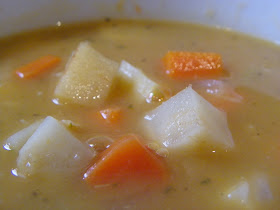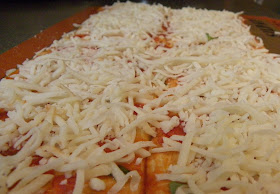I've been a fan of making my own body products since I was a little girl. My mom never knew if the concoctions in the fridge were for eating or for my face! While my friends were buying expensive hair treatments, I was slathering my locks with mayonnaise. When my friends were buying ten different bottles of acne wash, I was spreading honey on my face.
Feed your skin!
- Honey: Antiseptic, contains antioxidants
- Olive Oil: Moisturizer, contains antioxidants
- Sugar: Exfoliant
- Coffee Grounds: Exfoliant, caffeine which tightens skin, stimulates blood flow
- Coconut: Antiseptic, moisturizer, contains antioxidants
- Almonds: Exfoliant, contains Vitamin E, contains antioxidants
- Green and Black Tea: Contains antioxidants, antibacterial properties, anti-inflammatory
- Oranges: Contains Alpha Hydroxy Acids which sloughs off dead skin cells and promotes growth of new skin cells, contains antioxidants, anti-inflammatory
Remember, these recipes include perishable ingredients and should be used immediately or refrigerated in an air-tight container for up to 5 days.
Bring your scrubs, masks, moisturizers and rinses into the shower in an air-tight container to avoid getting them wet. You should always shave before using a body scrub, so your skin can get fully exfoliated.
Tropical Body Scrub
Makes enough for one treatment
This is a great exfoliating scrub with orange juice and lemon juice to slough off dry skin.
- 3/4 cup granulated sugar
- 1/4 cup brown sugar
- 1/4 cup shredded coconut
- 1 tablespoon honey
- 3/4 teaspoon grated ginger root
- 1 teaspoon grated orange zest
- 2 tablespoons orange juice
- 1 teaspoon lemon juice
Combine sugars, coconut, ginger and orange zest. Stir in honey, then lemon and orange juice. Shower as usual, then turn the shower head so you are not in the water. Rub the scrub over your entire body in circular motions (to stimulate blood flow), applying light pressure, for five minutes. Do not use this scrub on your face. If possible, wait an additional five minutes before rinsing. Rinse with warm water. Once dry, follow with an all-natural body lotion.

Wake-Up Exfoliating Scrub
Makes enough for one treatment
This scrub is a great way to start the morning. The caffeine from the coffee grounds stimulate blood flow and tighten skin, and the acidity from the orange juice leaves your skin feeling clean and silky.
- 1/4 cup brewed coffee grounds
- 1/2 cup granulated sugar
- 1/4 cup almonds, ground
- 3 tablespoons raw cane sugar (brown sugar if you don't have cane)
- 2 black tea bags
- 2 tablespoon orange juice
Combine coffee grounds, sugars, almonds and contents of the tea bags. Stir in orange juice. Shower as usual, then turn the shower head so you are not in the water. Gently massage the scrub over your entire body for about 5 minutes. Do not use on your face. If possible, wait an additional 5 minutes before rinsing. Follow with an all-natural body lotion.
Moisturizing Shower Cream
Makes enough for one treatment
Start moisturizing before you step out of the shower. This creamy mixture is perfect after using a body scrub. It's filled with antioxidants and moisturizing ingredients to leave your skin feeling hydrated and silky smooth.
- 1 cup water
- 2 green tea bags
- 1/3 cup old fashioned oats3 tablespoons honey
- 2 tablespoons olive oil
- 1/4 teaspoon grated orange zest
- 1/4 teaspoon almond extract
Microwave 1 cup of water for 1 minute, or until hot. Steep two green tea bags for 5 minutes. In a bowl, combine 1/4 cup plus 1 tablespoon brewed tea and oats. Add honey, olive oil, orange zest and almond extract. Mix together until the mixture is completely combined. Shower as usual, use a body scrub if desired and rinse. Turn the shower head so you are not in the water. Slowly massage the moisturizer over your entire body. Let the moisturizer soak in for a least 5 minutes, the longer the better. Rinse.
Strawberry Fields Face Scrub
Makes enough for 2-3 treatments
This scrub gently sloughs off dead skin cells from your face, while nourishing your skin with anti-oxidant-filled strawberries and honey.
- 1/2 cup old-fashioned oats, slightly ground
- 5 small strawberries, well mashed or slightly pureed, about 1/4 cup (frozen strawberries work just as well, just defrost and proceed)
- 2 tablespoons superfine granulated sugar (If you don't have this on hand, toss regular sugar into a food processor and pulse a few times)
- 5 almonds, finely ground
- 1 tablespoon honey
- 1 tablespoon milk
Combine oats and strawberries. Stir in honey and milk, then sugar and almonds. Moisten face, gently massage face with about a tablespoon of scrub. Let the scrub sit for up to 10 minutes, the rinse with warm water and pat dry.
Tightening Face Mask
Makes enough for several treatments
The ginger and orange zest in this mask act as gentle astringents, while the egg whites tighten the skin.
- 2 egg whites
- 1 tablespoon milk
- Pinch grated ginger root
- 1/4 teaspoon grated orange zest
In a bowl, whip egg whites, milk, ginger and orange zest until frothy. Wash your face as normal and pat dry. Use your fingers to apply a light coating of the mask all over your face, avoiding your eyes. Let the mask dry for up to 15 minutes, then rinse with warm water and pat dry.

Conditioning Hair Mask
Makes enough for 2-3 treatments
This hair mask nourishes your hair with antioxidants and vitamins, and leaves your hair incredibly soft and shiny.
- 1/4 cup plain or vanilla yogurt
- 1/4 cup pureed pumpkin
- 1 tablespoon olive oil
- 1 tablespoon milk
- 1 tablespoon coconut powder (If coconut powder is not readily available, use 1/2 tablespoon coconut milk instead)
- 1 teaspoon honey
- 1/2 teaspoon vanilla extract
In a bowl, combine yogurt, pumpkin and olive oil until the oil is fully incorporated. Stir in milk, coconut powder, honey and vanilla. Wash hair as normal, do not condition. Squeeze water out of hair, and coat hair with about 1 tablespoon (2 if your hair is very long or thick) of mask, starting from the bottom and working your way up. Let the mask sit for 5 minutes before rinsing. To deep condition your hair, coat your hair with 2 tablespoons of mask. Wrap your hair with plastic wrap, and then wrap a hair towel over the plastic wrap. Let the mask condition your hair for up to an hour before rinsing well with warm water.
Shiny Hair Rinse
Makes enough for one treatment
This rinse protects your hair with antioxidants and makes it incredibly shiny.
- 2 cups water
- 2 green tea bags
- 2 black tea bags
- 1 tablespoon orange juice
- 1/4 teaspoon vanilla extract
Microwave two cups of water in separate cups, for 1 minute. Place green tea bags in one cup and black tea bags in the other cup. Steep for 5 minutes. Measure out 1/2 cup green tea, combine with 1 cup of black tea, orange juice and vanilla extract. Wash hair as usual. Right before getting out of the shower, squeeze the water out of your hair. Pour the rinse evenly over your hair. Let the rinse soak into your hair for a few minutes, then squeeze out your hair. Do not rinse.























 Press the crust into the bottom of the glass, I like to use a tart press. Don't pack it too tight. Just enough to hold it's shape.
Press the crust into the bottom of the glass, I like to use a tart press. Don't pack it too tight. Just enough to hold it's shape.









